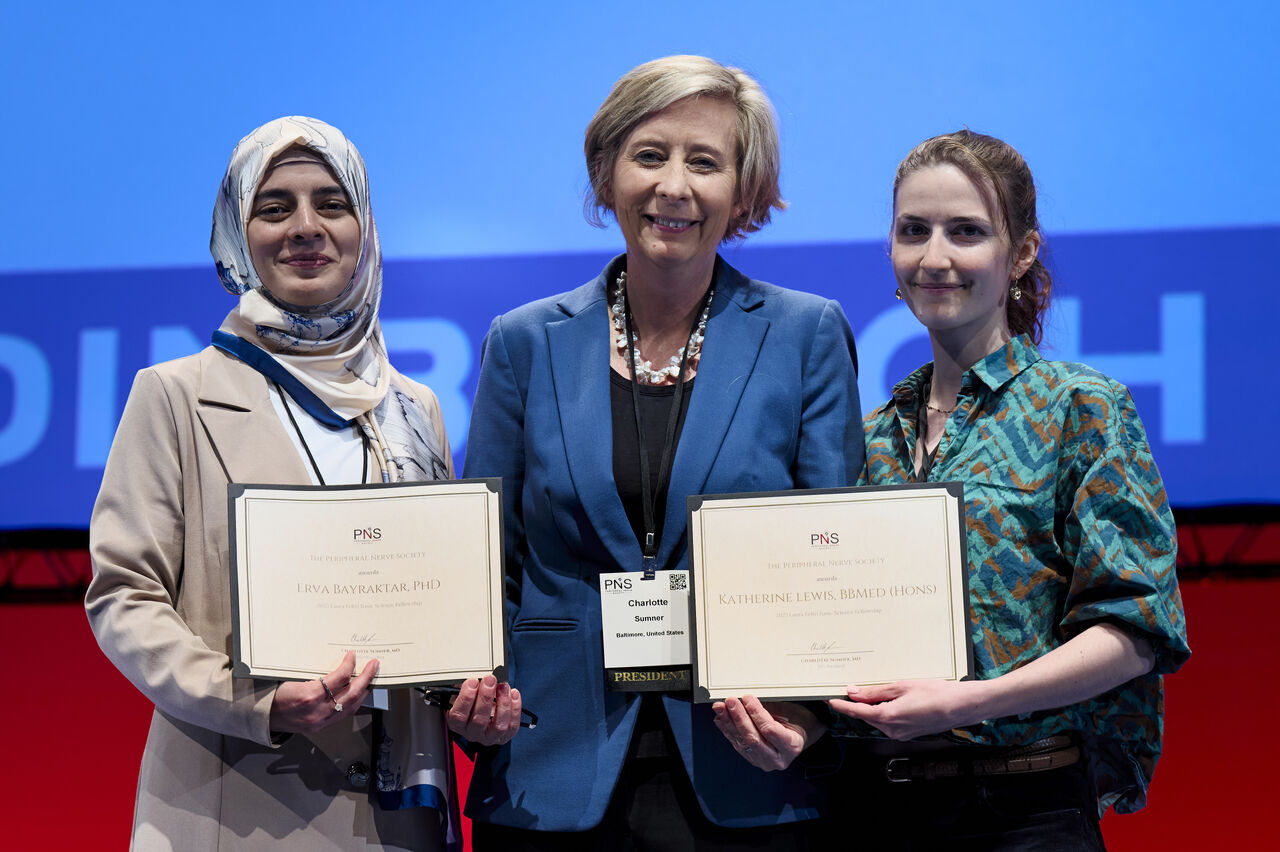Erva Bayraktar, Ph.D. was recently awarded the Peripheral Nerve Society’s Laura Feltri Basic Science Fellowship at its annual meeting, held in May in Edinburgh, Scotland. This prestigious grant provides two years of funding to allow a junior scientist to further develop expertise and knowledge in peripheral nerve research. Erva will now move to the University of Cambridge to pursue studies in the laboratory of Professor Michael Coleman. Her new project will aim at characterizing the role of Connexin-mediated communication in situations where there is SARM1-dependent axon degeneration.
By way of background, defects in the Connexin-32 protein are the cause of Charcot-Marie-Tooth disease type 1X (CMT1X). These defects lead to both the loss of the myelin protecting peripheral nerves, and the nerve itself through the process of axon degeneration. The SARM-1 protein appears to be a key player in driving the nerve degeneration, and its deletion may be neuroprotective in peripheral nerve diseases.
In leadup to this award, Erva has been working as a TIN-sponsored postdoctoral researcher in the laboratory of Professor Mario Bortolozzi at the Veneto Institute of Molecular Medicine in Italy. In her time there she has developed expertise in the use of biophysical techniques to study Connexin involvement in disease. Importantly, her research in the Bortolozzi lab has aimed to better understand the Connexin-32 protein implicated in CMT1X. Specifically, she has explored how mutations in the gene for Connexin-32 can lead to CMT1X, by altering its function in Schwann cells making myelin.
In comment to TIN about this notable award:
“It is an honour to be named a Laura Feltri Basic Science Fellow. My work in Professor Bortolozzi’s lab has provided me with relevant experience in connexin biology, and I am eager to continue my research on Connexins in this novel project with Professor Coleman. This fellowship is instrumental in supporting our future investigation into the complex mechanisms by which a Connexin may influence axon degeneration, with the ultimate goal of driving forward treatments and finding solutions for patients suffering from peripheral neuropathies.” – Erva
“Erva has done excellent work in my laboratory, contributing to the understanding of the pathogenesis of CMT1X and to the development of in vitro models for the analysis of Cx32 mutations. The financial support from TIN was crucial in achieving these results, and consequently, it paved the way for this new milestone in Erva’s research career.” – Mario

